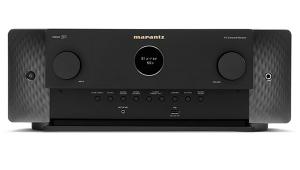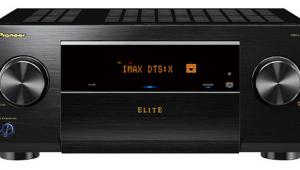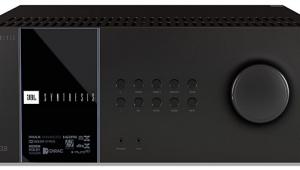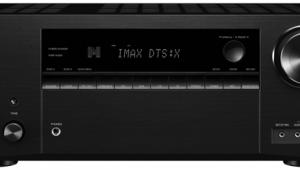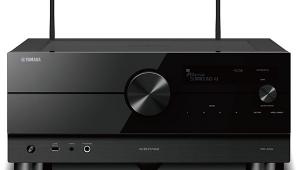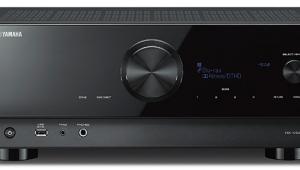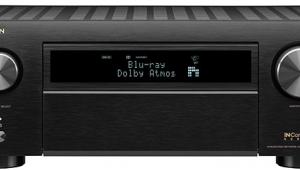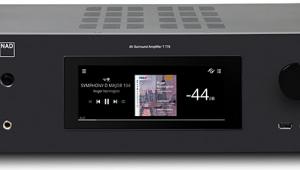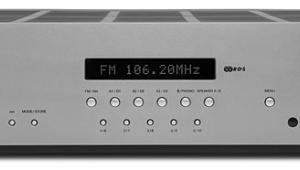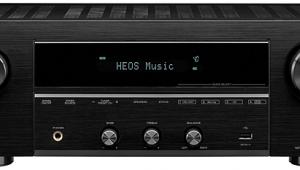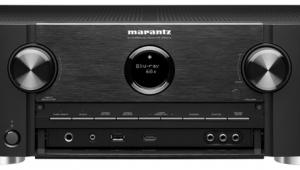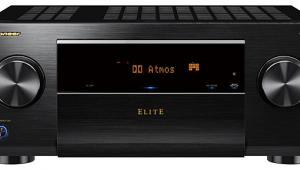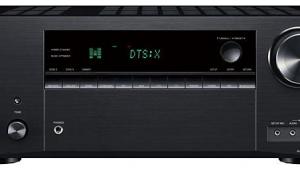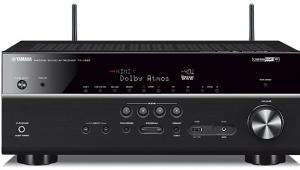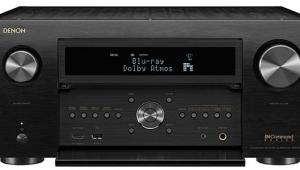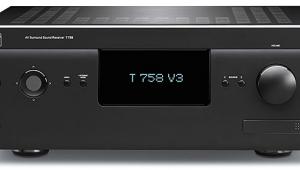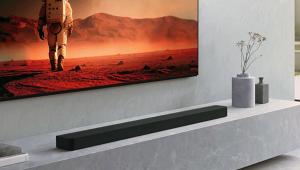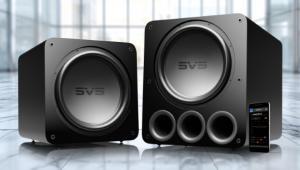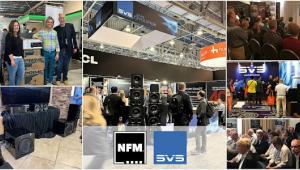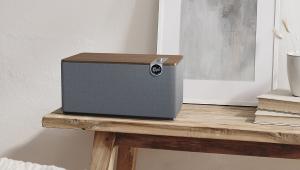NAD T 757 A/V Receiver HT Labs Measures
Five channels driven continuously into 8-ohm loads:
0.1% distortion at 75.2 watts
1% distortion at 91.2 watts
Seven channels driven continuously into 8-ohm loads:
0.1% distortion at 71.2 watts
1% distortion at 81.6 watts
Analog frequency response in Analog Bypass mode:
–0.22 dB at 10 Hz
–0.07 dB at 20 Hz
–0.11 dB at 20 kHz
–3.08 dB at 50 kHz
Analog frequency response with stereo signal processing:
–1.91 dB at 10 Hz
–0.59 dB at 20 Hz
–1.06 dB at 20 kHz
–43.07 dB at 50 kHz

This graph shows that the T 757’s left channel, from Audio1 input to speaker output with two channels driving 8-ohm loads, reaches 0.1 percent distortion at 94.3 watts and 1 percent distortion at 121.9 watts. Into 4 ohms, the amplifier reaches 0.1 percent distortion at 146.9 watts and 1 percent distortion at 181.0 watts.
Response from the multichannel input to the speaker output measures –0.22 decibels at 10 hertz, –0.07 dB at 20 Hz, –0.08 dB at 20 kilohertz, and –3.07 dB at 50 kHz. THD+N from the Audio1 input to the speaker output was less than 0.027 percent at 1 kHz when driving 2.83 volts into an 8-ohm load. Crosstalk at 1 kHz driving 2.83 volts into an 8-ohm load was –57.84 dB left to right and –58.01 dB right to left. The signal-to-noise ratio with an 8-ohm load from 10 Hz to 24 kHz with “A” weighting was –105.48 dBrA.
From the Dolby Digital input to the loudspeaker output, the left channel measures –0.44 dB at 20 Hz and –0.94 dB at 20 kHz. The center channel measures –0.45 dB at 20 Hz and –0.90 dB at 20 kHz, and the left surround channel measures –0.44 dB at 20 Hz and –0.87 dB at 20 kHz. From the Dolby Digital input to the line-level output, the LFE channel is –0.20 dB at 20 Hz when referenced to the level at 40 Hz and reaches the upper 3-dB down point at 149 Hz and the upper 6-dB down point at 199 Hz.—MJP
Video Test Bench
The NAD performs no video processing. Its video circuitry is passthrough only (resolution in = resolution out). It does cross-convert from a component input to an HDMI output, also with no available upconversion and/or deinterlacing.

In our Digital tests, the NAD passed above white, but barely, responding only up to a level of 239. Video peak white is 235, and digital video levels extend from 0 to 255. There’s no need to go all the way to 255, as video sources don’t, but they can sneak above 235 (even though they shouldn’t). Because of this, we like to see more than the NAD’s 1.7 percent of headroom. (To be fair, the late, lamented Pioneer Kuro plasma HDTVs barely responded above white—one of their few shortcomings.) The T 757 definitely clipped below black, extending only to the level 17 (video black is 16). It also failed horizontal chroma resolution, but only at the highest burst—not an uncommon shortcoming and one that, in our experience, won’t be visible on most program material.
In the Analog tests (1080i component in to 1080i HDMI out), the T 757 clipped both above white and below black. When I switched to a 480i input with a 480i output (both analog and digital), the NAD cleanly passed both below black and above white by a wide margin. It’s a puzzle as to why it could do so and yet not pass them equally well at 1080i.The receiver also failed analog chroma resolution in the same manner as in digital.—TJN
